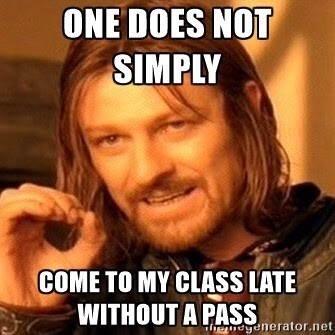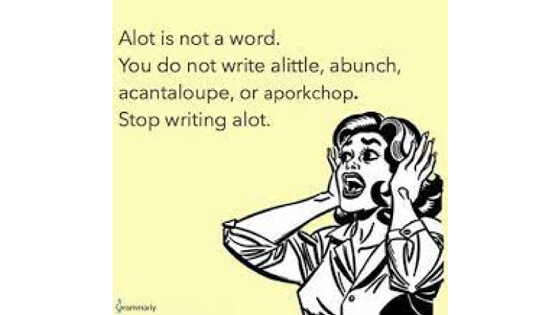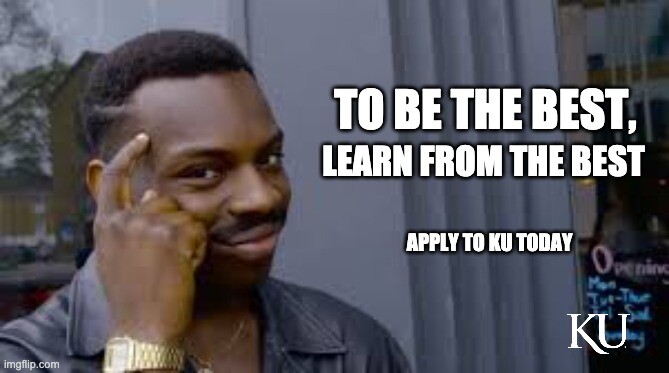Who would have thought that memes—those images, videos, and pieces of text that are copied, often modified, and spread via internet—have roots in ancient Greek? The term ‘meme’ was introduced in 1976 by British evolutionary biologist Richard Dawkins, in his work The Selfish Gene, and it comes from the Greek mimema, meaning ‘imitated.’1
Today, memes are a vehicle used to express commentary on a phenomenon or a relatable event. They’re typically shared on social media to capture attention or get a laugh. As numerous blog posts reflect, educators are using them in class and, in the case of Sharon Serano, receiving them in good fun from family members. As Sharon prepped lesson plans one night, her 14-year-old son made this meme for her:

Sharon is one of many educators who have found that memes can be effective teaching tools, whether they’re created for students or by them.2 Read on to explore ways to create and use classroom memes.
Meme Creation
A basic meme shows an image and text; more involved ones include animation, audio, or video. These elements can be original, duplicated, or modified. Many meme elements are based on or lifted from culturally familiar sources, such as Sharon Serano’s Star Trek: The Next Generation-inspired gift from her son.
The internet is replete with meme-creation tools, including apps that your students may already have on their phones. Most are free, but some charge small fees and some allow users access to adult content, so choose carefully before assigning creation tasks.
Each creation tool walks you through a few simple meme-making steps. Every site is unique, but the typical steps are these:
- Choose your meme’s size and orientation (portrait or landscape).
- Choose from preset templates and icons or design your own from scratch.
- Choose or upload the images, photos, and/or artwork you’d like to include.
- Add your text, choosing the text font you prefer.
- Customize the background and color scheme as you like.
- Save your work! Download and save it as a PNG, JPG, or GIF file.
- Always share—via email, text message, social media, or through your classroom file-sharing system.
Memes for Students
Memes quickly communicate information on any subject—often with humor, which can make the shared facts more memorable. Consider this excerpt from The Lord of the Rings …
… adapted to reinforce a class rule:

Beyoncé can help you get a point across …

… as can a baby’s photo:

Think of educational messages you can deliver in this concise, humorous way:

Memes by Students
A quick internet search will yield countless school-related memes, including many submitted as homework assignments. Before issuing a meme-creation assignment, teach a lesson on memes. Go over their key elements and offer some common examples. Most of your students are familiar with them, but your introduction will help level the playing field for your class.
Activities and learning objectives will vary by class, subject, and grade level, of course. As an example, consider the specifics of a meme project that challenged students to demonstrate their understanding of irony:3
Object
Use this activity for a unit learning about irony through a given novel—in this case, William Golding’s Lord of the Flies. Faculty sought a creative assessment tool that a) differed from previous assessment tools, and b) would be enjoyable for the students to use.
Tasks
In addition to creating a meme, students were expected to include a supporting paragraph detailing the type of irony the meme conveyed and explaining why they chose the image that they did. In writing this paragraph, they practiced their writing and grammar skills.
Pedagogy
To create this product and an effective message within it, students had to choose imagery and text carefully. Doing so using an online tool demonstrated their knowledge of technology and technological content.
As memes tend to include very few words, a meme that successfully conveys a message must use strong, highly descriptive language. Students were called upon to think critically about their word choices, which supports word study and improves vocabularies.
Inclusion
Meme creation uses but does not require a computer and internet access. Options for this activity enabled learners with varied degrees of technological access to complete it.
- Students could draw their memes by hand, keeping in mind the elements of a meme and ensuring that their final product contained them
- If students had access to a computer but not to the internet, they could use a program such as Microsoft Paint or PowerPoint to create a meme
Evidence of Learning Outcomes
Faculty assessed the students’ memes based on the level of sophistication in their use of irony and its connection to Lord of the Flies.
The supporting paragraph helped faculty assess:
- Comprehension of the type of irony chosen
- Written communication skill regarding the rationale for each selected image
Response
Students were extremely motivated to come up with creative ideas for their memes and complete the assignment because it incorporated a type of social media that they were used to seeing outside of the classroom.
“I was shocked and impressed at how keen and willing the students were to complete this assignment,” concluded their teacher. “It made me excited to continue to explore new and innovative ways to use technology and relevant social media … to connect with
and motivate all students.”
Expand your creativity. Advance your career.


